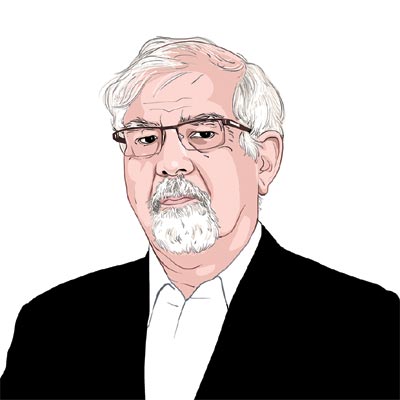Opinion Peak rates perhaps
It is likely that the Reserve Bank of India is done with raising repo rates for the foreseeable future.
There is justifiable concern about the level of inflation in India. And there is progress from the RBI. Not so long ago,the RBI used the overall wholesale price index,or WPI,as the indicator of inflation. They have now moved to core inflation which they define to be non-food manufacturing. It still is a mystery as to why they dont use the consumer price index and/or the GDP deflator to measure progress on inflation. The new (and old) CPI indices are considerably more accurate than the WPI; the GDP deflator is most accurate,and comprehensive,but comes with a two-month lag. Rather than ignore all this information,why doesnt the RBI combine the old and accurate GDP deflator information with the CPI information for the most recent two months?
Over the years,I have argued that at a minimum,the RBI should use seasonally-adjusted data,as is the practice in most parts of the world. It persists in using year-on-year data for determining short-term trends,when a three-month seasonally-adjusted change in inflation will be more representative.
First,some facts about Indian inflation,regardless of the indicator used. There have been three phases in Indian inflation since 1980. The first phase,1980 to 1994,inflation averaged around 8 per cent. The second phase,of almost the same length in time,1995 to 2007,inflation averaged 4.5 per cent. In the third,high-inflation,phase,2008 to present,inflation has averaged around 7 per cent. The latest year-on-year inflation numbers for the three indicators,WPI,CPI and GDP deflator (GDPD) are all close to 9 per cent. It seems India does have an inflation problem.
But is the present inflation problem an ex-problem? There are several indicators suggesting that that is indeed the case. Since 1999,the single most important explanation for Indian inflation has not been the fiscal deficit,has not been money supply growth,and has not been credit growth. It has been the price of oil. And this price has declined some 20 per cent from its peak and is unlikely to go up soon. It may go up and the conventional wisdom of a month ago was that oil would sustain itself above $125 for months,if not years to come.
Interestingly,the oil price has not only dictated Indian overall inflation,but also the inflation in the FAO food index for the entire world. This index includes corn,soybeans,wheat,rice,sugar,and anything else that is edible. Plus food prices are a function of drought,rainfall and stupid and enlightened policies in more than 100 countries. That all of this is affected by the price of oil is a tribute to liquidity,hedge funds and outright speculation. (You can try and separate out the individual contributions but I am just reporting the total effect).
What about manufacturing inflation,RBIs present key variable for determining its policy? Since the first quarter of 2010 (or since exactly the time RBI began its campaign to bring down inflation) GDP manufacturing inflation deflator has shown the following year on year rates for the last five quarters 5.0,6.1,5.3,5.1,and 5.5 per cent. Even the RBI will admit (unless I am presuming a bit too much) that the GDP deflator is a more comprehensive and more accurate price index than the WPI for manufacturing. This index has shown no movement for the last year and a half,while the RBI has been zealously increasing policy rates. Agriculture GDP inflation,on the other hand,peaked at 23.4 per cent in the second quarter of 2010,registered 16.8 per cent in the first quarter of 2011,and will likely be below 10 per cent in the April-June quarter 2011. So perhaps contrary to all logic,RBIs inflation-fighting policy does not affect manufacturing inflation but does affect the probability of droughts or equally as likely,improve governance of food policy at the centre.
The RBI should be concerned about economic growth,inflation,the determinants of inflation,and the effect its policy instruments have on both growth and inflation. There is precious little effect that repo rates can have on domestic or international food inflation. So persistence with the policy of increasing rates while looking at food prices inflating does not make much sense. Rising oil prices mean increasing policy rates cannot help the fight against inflation. But here is the asymmetry: steady to falling oil prices (a likely future possibility) means that persistence with high nominal repo rates is a recipe for a growth disaster. Hence,it is likely that,given rationality,the RBI is done with raising rates for the foreseeable future.
The writer is chairman of Oxus Investments,an emerging market advisory and fund management firm





